By James England via concealednation.org
Modern firearms are usually made to exacting standards. It doesn’t matter if it’s a Hi-Point or a Kimber, the modern manufacturing process usually takes out a lot of guesswork as to how a pistol should operate. The most common fault with a concealed carry pistol will be a failure to fire. Supposed “accidental” (negligent) discharges, though oft cited in the news, are truly only common when someone is negligently using his or her firearm. This is usually operator error – not mechanical error . . .
So, for concealed carriers, the biggest obstacle is ensuring proper weapon operation. The mechanics of each gun have different tolerances and thresholds to things like carbon, dirt, mud, and humidity. Each has a better chance of properly discharging a round if it is kept lightly lubricated and clean.
When To Clean a Concealed Carry Weapon
- IF fired: directly afterwards.
- IF not fired: once a month should suffice.
A concealed carrier should be regularly practicing with the pistol he carries – and thus be cleaning it regularly. If, for instance, there is a back-up concealed carry pistol that hasn’t been getting a lot of use, then a monthly cleaning schedule is a safe bet to ensure proper operation.
Rule of thumb: Pick a day out of the month that you can commit to as a weapon cleaning day. All weapons that haven’t been out to the range can get properly maintained that day. That way – you’re always on top of routine weapon maintenance.
Basic Weapon Maintenance for Pistols
For this demonstration, we’re going to show the proper disassembly of a SIG SAUER P250. It’s an excellent example of a compact concealed carry pistol and, for instruction purposes – it should suffice.
Note: Your pistol will have a similar process. Check with your pistol’s manufacturer and follow their instructions for operator maintenance and cleaning.
In a fully assembled and ready state, this is the SIG SAUER P250 (9mm). It presently has a full magazine (12 rounds) plus a round in the chamber.
Before it may be properly cleaned, it has to be disassembled to SIG SAUER’s manufacturing specifications. Below is what it should look like before it is cleaned.
Safely Unloading the Firearm
It cannot be stressed enough that one of the first safety rules for firearms is treat every weapon as if it were loaded. No matter if it’s a pistol that hasn’t been used for a month or the concealed carry pistol being brought out of your inside the waistband concealed carry holster – treat it as a loaded firearm and ensure it is unloaded prior to disassembly.
Note: During the unloading phase – always ensure the barrel is pointing in a safe direction.
Eject the magazine by depressing the magazine release on the side of the pistol grip. The magazine should slide out on its own volition.
Finger outside of the trigger housing group, grip the serrated portion of the back end of the upper receiver and pull back until the slide is fully back. If a round is in the chamber, it should eject.
Once fully back, push up on the slide-lock to keep the upper receiver in this position.
Now that the upper receiver is locked in the rear position, manually inspect the barrel to ensure there is no round left in the chamber.
Once the barrel has been inspected and is free of ammunition – the weapon is now unloaded and ready for disassembly. Rotate the upper receiver release lever, depicted in the image below.
Now release the slide lock. This should allow the upper receiver to slide off smoothly from the lower receiver.
The lower receiver, at this point in time, is at the approved manufacturer’s state for operator-level weapon maintenance and cleaning. Put it down on the bench and direct your attention to just the upper receiver.
Flipping the upper receiver over, you should see a spring and pin assembly supporting a barrel in place. Gently push the pin forward just enough to release it from the grasp of the barrel.
Cant the spring and pin just enough for it to clear the barrel’s threshold and remove it. For some pistols, the spring and pin is a single assembly. For the SIG SAUER P250, the pin can be removed from the spring for cleaning purposes.
The barrel can be removed in a similar fashion. Gently push it forward and then cant it back to remove it from the upper receiver.
Once the barrel is removed – congratulations. For the SIG SAUER P250 and many similarly constructed compact pistols – you have reached the manufacturer’s specification.
Basic CCW Pistol Cleaning Procedures
Step 1: Unload
Always unload and clear all firearms prior to disassembly.
Step 2: Disassemble
A brief overview was covered in the previous section. Always check with the owner’s manual of your individual weapon to ensure proper form was followed.
Step 3: Inspect
Inspect all individually disassembled parts for:
- Carbon
- Corrosion (Rust)
- Foreign matter, debris (sand, dust, dirt, sticks, twigs, hair, etc.)
- Burrs, degradation of metal parts
Final note: It’s also a good idea to unload all magazines and take that opportunity to inspect the springs for carbon, dirt, grime, wear and tear.
Step 4: Clean
For most dirt and debris, a light cloth or cotton wipe may be sufficient. Caked on carbon deposits and rust can cause weapon malfunction. To remove them, use a light amount of manufacturer-approved weapon lubricant and either a bristle-tip brush and bore brush.
Scrape off the carbon and rust and clean with a cloth. Always inspect the primer and hammer to ensure they are able to move freely.
Clean until a white cloth can be run over and through any of the individual parts with little or no black residue remaining.
Step 5: Lubricate
Where metal parts meet, weapon lubricant is appreciated. It helps prevent corrosion, improves the function of a weapon, and maintains it longer. Heavy amounts is not necessary. A light coating of where metal meets metal, applied conservatively with a cloth, should be sufficient.
Step 6: Reassemble
Reverse the instructions above (or more preferably – your manufacturer’s given instructions) until you have an unloaded pistol in your hands.
Step 7: Function Check
Always check to ensure the pistol operates as it ought to. While it is unloaded, slide the receiver back and forth to see if it moves as smoothly as before. There shouldn’t be any sudden resistance where there was none before. Make sure your upper receiver’s slide lock is in place to keep the upper receiver from sliding back off. Check this by dry firing the weapon and visually inspecting the pistol.
Step 8: Reload
At this time, ensuring the weapon is facing a safe direction, it is appropriate to reload the firearm. Once the magazine clicks back into place in the magazine well of the pistol, it is again a loaded firearm and should be treated as such.
Hopefully, this tutorial was helpful for those beginners out there still getting used to regular weapon maintenance. Check back regularly to see this and other instructional tutorials on maintaining and using concealed carry handguns.

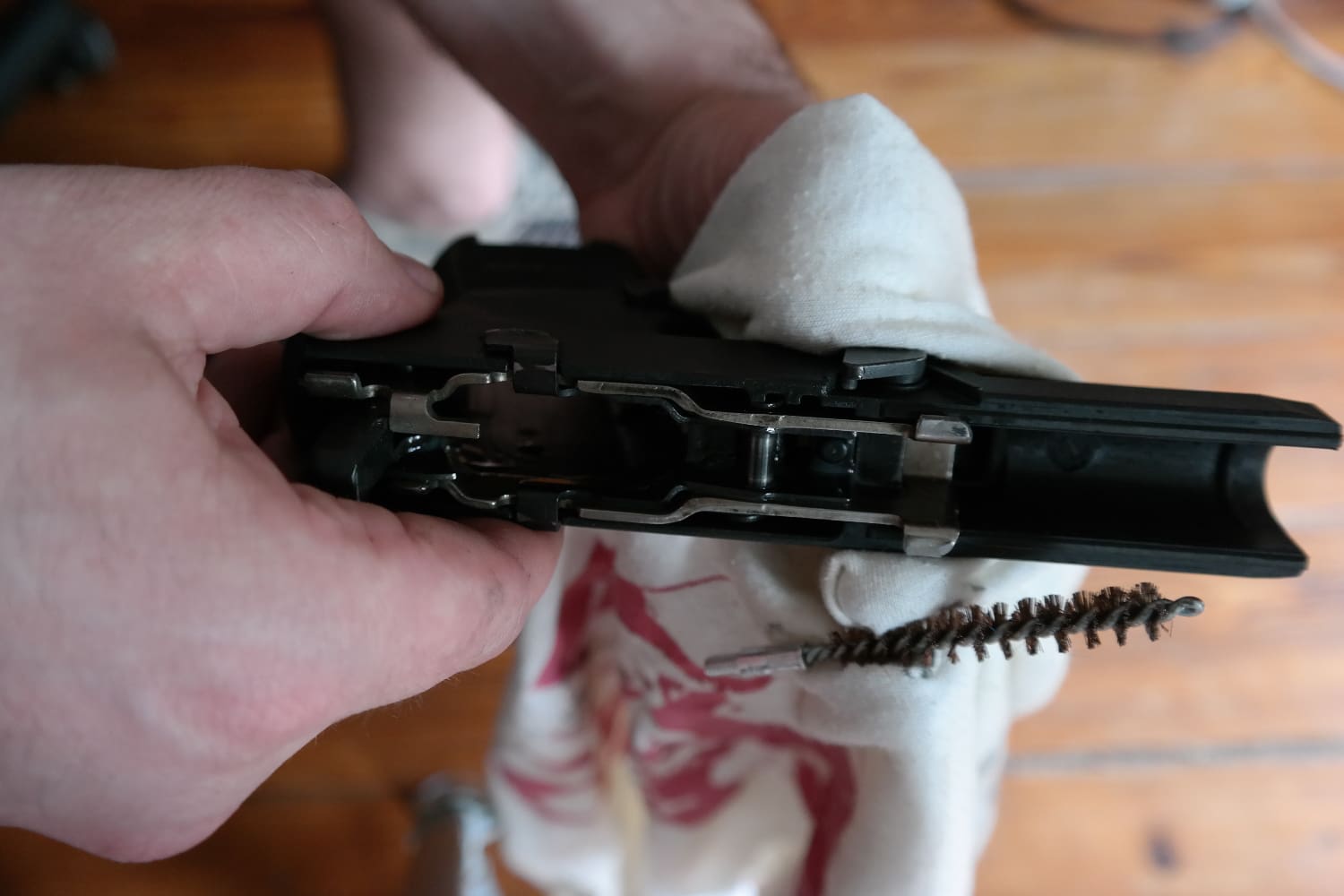
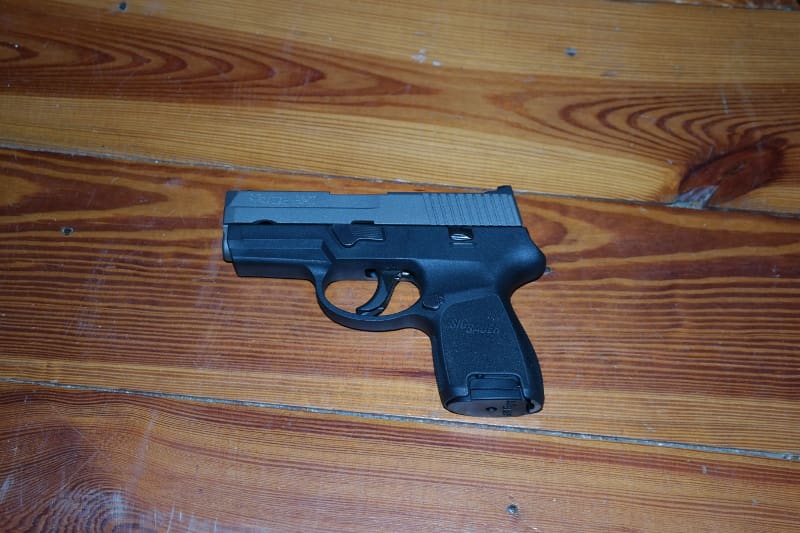
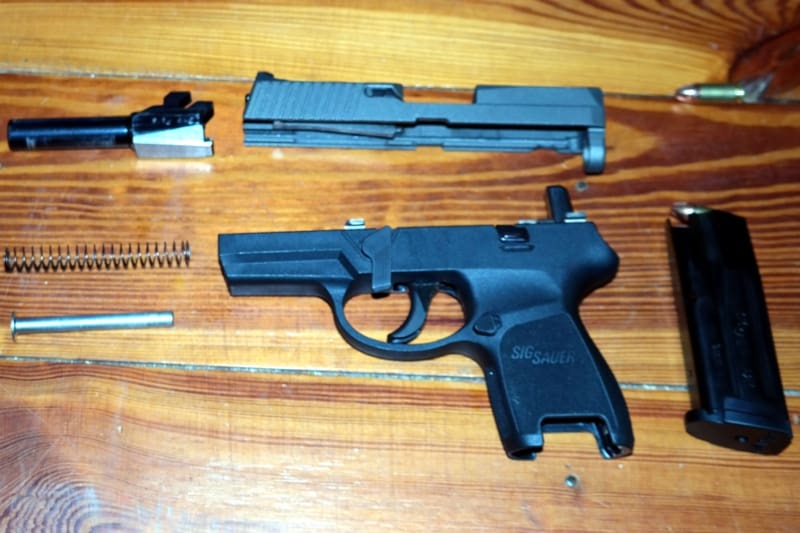
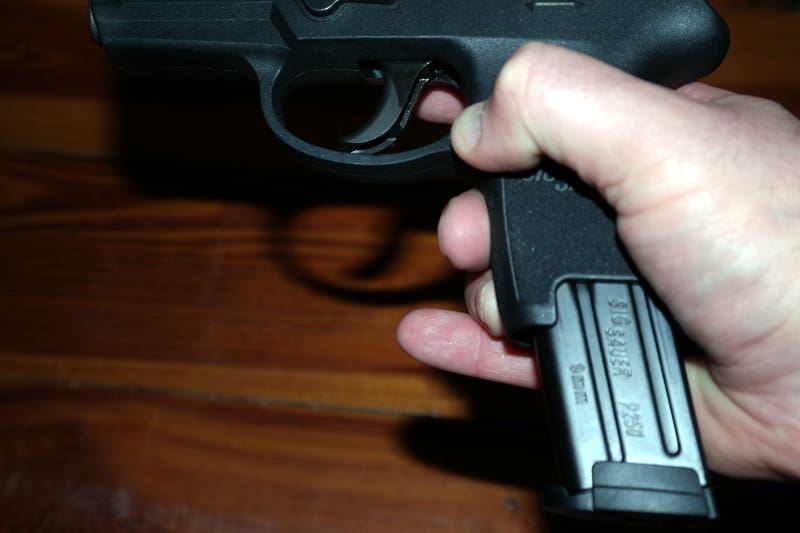
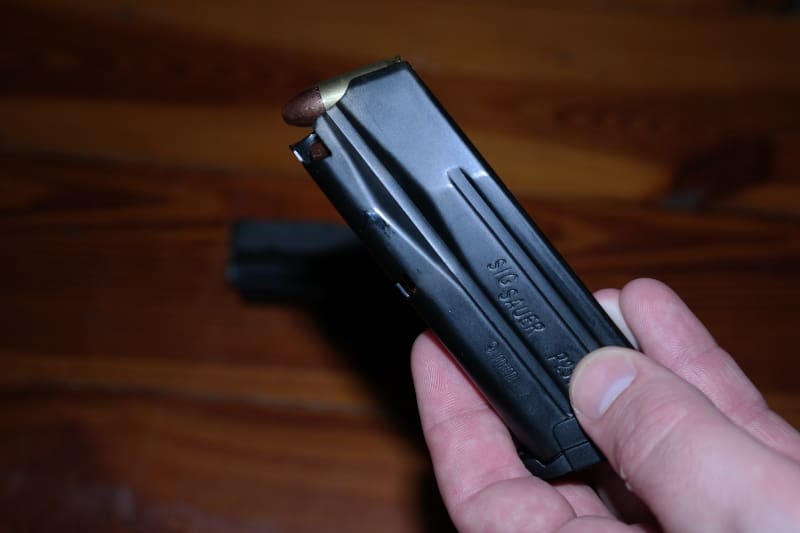
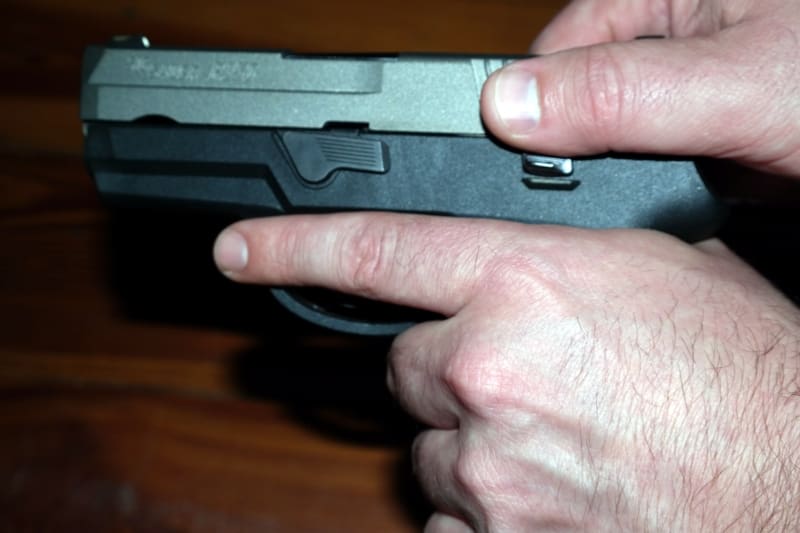
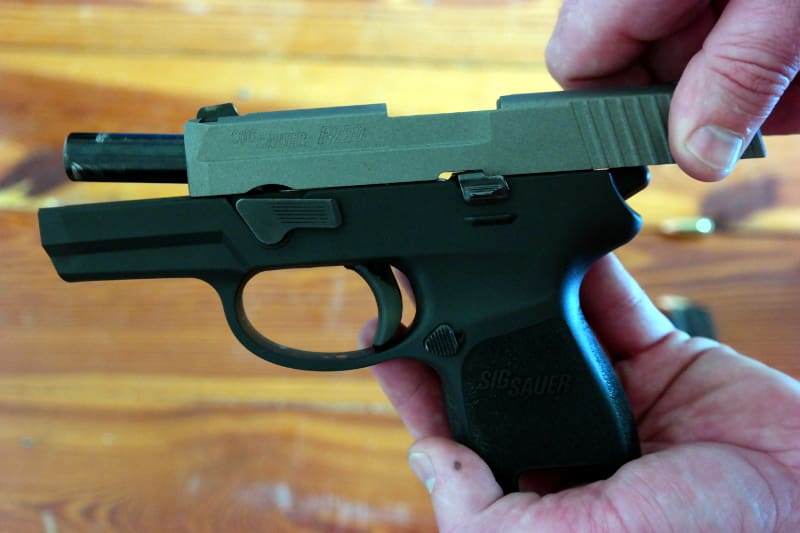
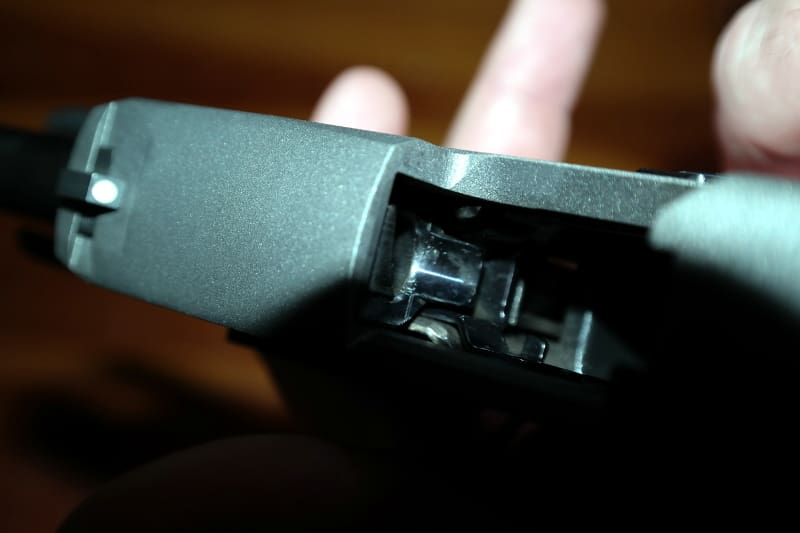
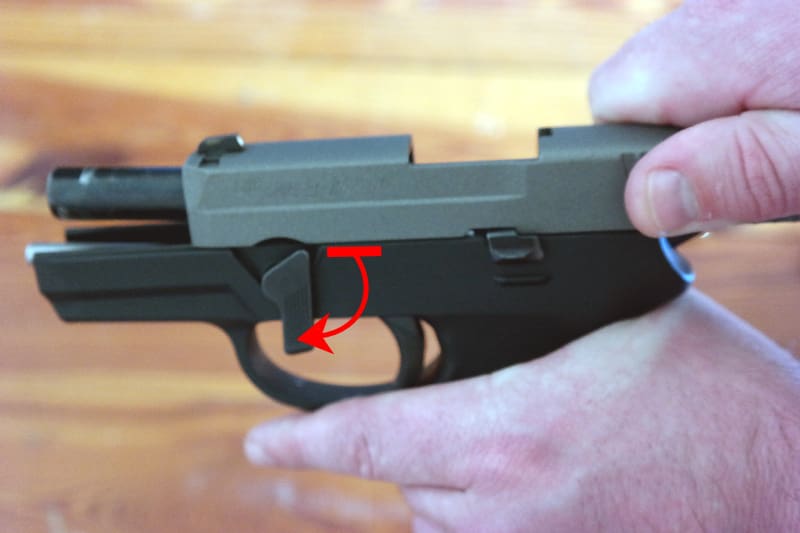
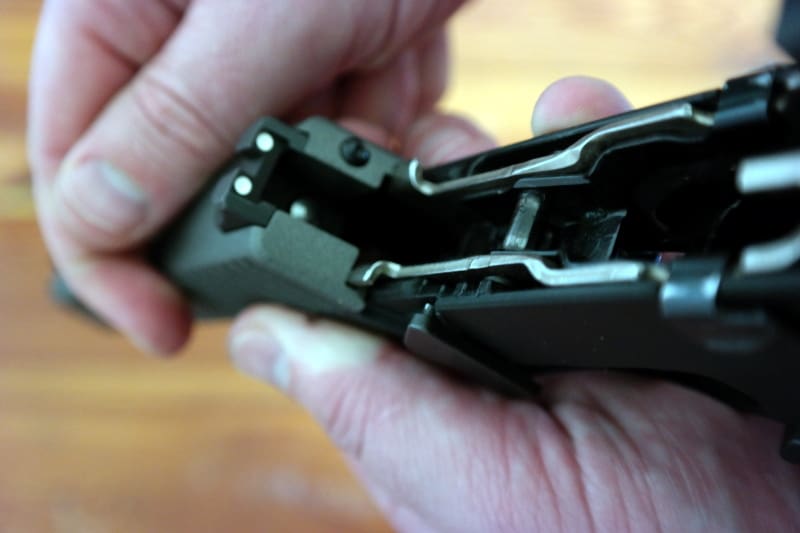
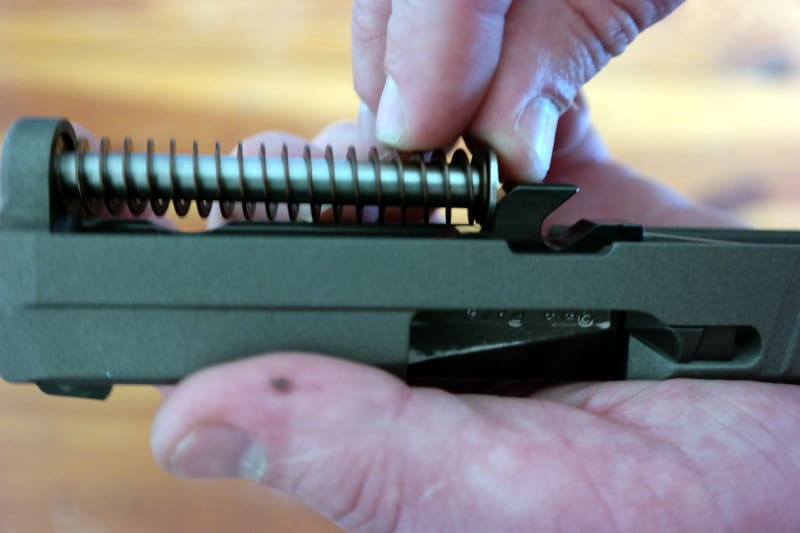
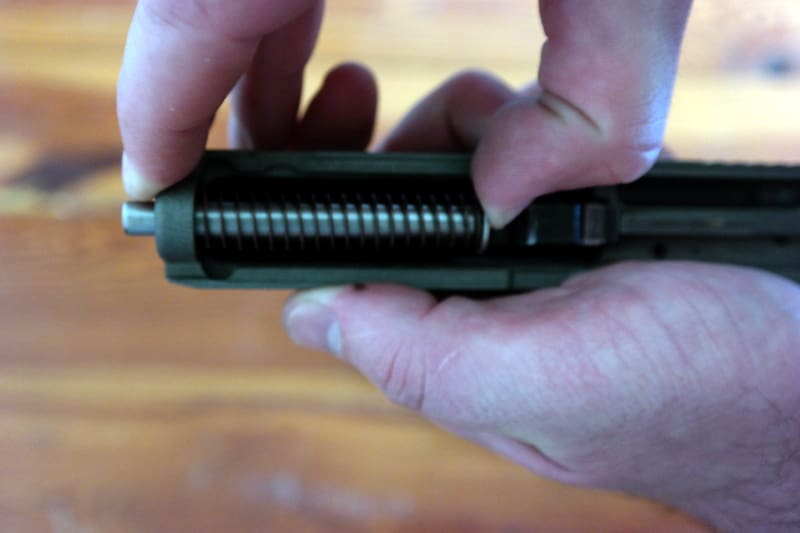
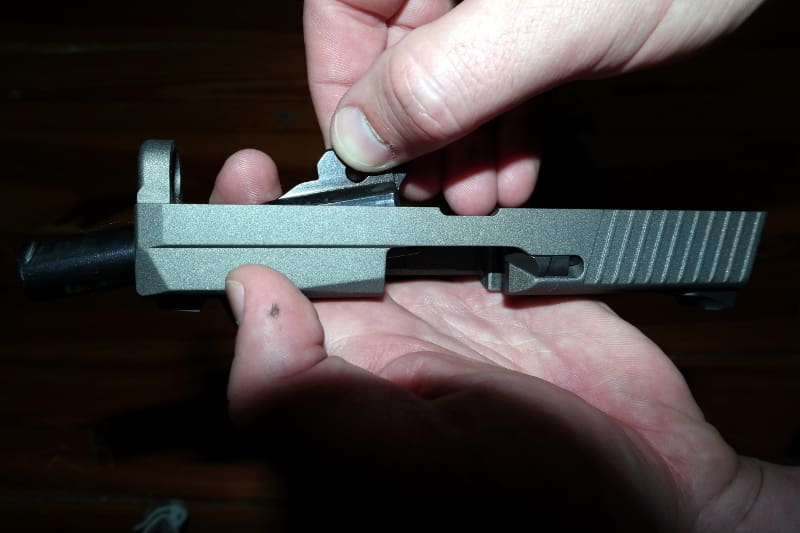



Good article for new gun owners and carriers, I’ll direct people to it when necessary. And thanks for the reminder that just because a gun is out of sight, doesn’t mean that it should be out of mind. Guns collect dirt and dust regardless of how often they are used.
Ok, maybe this isn’t manly of me but, the first step to a newbie about cleaning your firearm?
Read The Manual.
Seriously, the manufacturer paid folks including their engineers to provide guidance on disassembling and cleaning the weapon.
Read The Manual.
1st step is get a good divorce lawyer. If you’re not going to first put some plastic bag with padding or something down on momma’s nice wooden table before you clean. Make sure it’s a ventilated area and that (even if the gun can take it) that the table underneath can hold up to the cleaning fluid/fumes. Just sayin’
That had me laughing— but my girls ruined the good table with their nail polish, so I’m off the hook.
The author’s suggestion to clean your everyday carry handgun once a month is important. I discovered this the hard way … I decided to shoot my everyday carry handgun in the Fall after a summer of humidity and sweating. To my surprise and horror, I was not initially able to rack the slide to eject my self-defense ammunition (and change over to target ammunition). I tried again, no dice. I decided to try one more time and really reef on it — knowing that I might break something if it required that much force. Thankfully the slide broke free and ejected the hollowpoint self-defense round that was in the chamber.
The problem: my brass-cased self-defense round had started to corrode something fierce and green-blue gunk stuck to the chamber of the barrel. Needless to say I deactivated that round and made sure that the target ammunition cycled easily — which it did.
The moral of the story: clean your handgun often, especially in hot, humid weather. Or at least make sure you have a generous coating of light machine oil on your brass-cased round in the chamber of the barrel to prevent corrosion. Of course having a heavy coat of oil in the chamber can create problems in and of itself. (It would attract and hold a lot of carbon and other debris and could degrade your handgun’s ability to cycle properly.)
Does anyone make brass cased self-defense ammo? All the self-defense rounds I’ve seen are nickel, for that very reason.
Corbon PowR’Ball is brass cased last I checked. Budget JHP is too. Very little of the premium stuff.
Winchester Ranger ammunition. From all appearances, it has the exact same hollowpoint bullets as Winchester PDX1 ammunition — and you get 50 cartridges for about the same prices as a 20 round box of PDX1. However, Ranger ammunition comes in brass cases whereas PDX1 comes in nickel plated cases.
I know, the nickel plated PDX1 is better for the very reason that I discovered. When I purchased the Ranger ammunition, I wanted to have something like 400 rounds on hand and couldn’t justify the much larger expense of purchasing PDX1 premium ammo.
It doesn’t matter if it’s a Hi-Point or a Kimber
I’m confused. Does he mean this like it doesn’t matter if it’s a Tata or a Yugo*, which makes sense, or like it doesn’t matter if it’s a Tata or a Porsche, which makes no sense.
* The Yugo had a much better build quality than Kimbers, but I couldn’t think of another adequately low quality car for a comparison.
It seems like the more guns I get, the lazier I get about cleaning them. When all I had was a Marlin 60, I cleaned it every time I went shooting. Now, I always immediately clean the Mosin (corrosive ammo use), and the other stuff when it seems like they need it. If I go shooting, I may take a half dozen or more guns. That makes a lot of cleaning. Fortunately most of my guns can get by with less than ideal cleaning and still work fine. I do try to keep the carry guns reasonably clean (especially the P3AT). If I only shoot a cylinder or two through the 642, I may not immediately clean it.
Very shameful and naughty on my part. I guess that is a good thing about shooting AK/Glock/Pump Shotguns/.22 rifles. You can get away with a little suboptimal cleaning frequency.
If you carry mini revolvers it is VERY important that you pull the grip scales off frequently as part of your cleaning routine. I neglected to do this and when I finally did I had hard round balls of lint the size of cherry pits glued together by oil, any one of which could have blocked the hammer spring from fully functioning. Be advised.
Good point, and probably not exclusive to revolvers.
And if you don’t store your guns in an air-tight, dehumidified container, check all of them periodically. We’ve gotten record rain fall here in the last few months and I checked on one of my 1911s that I store in it’s original plastic box. There was some slight surface rust on the bottom of the grip. A bit of WD40, scrubbing with a brass brush, and a liberal oiling and it was like-new again, but it did make me check everything more often now that it’s been so wet.
Don’t forget to clean holsters as well, especially leather ones, can developed dry rot if neglected. After doing regular maintenance on my own leather holsters, decided to unlock my husband’s gun closet while he was at the golf course. Since he has only one handgun, a SS Smith & Wesson .357 revolver, and I had already cleaned/lubed it last time he used it the month before, then checked condition of holsters for it. Found a vintage hand tooled leather holster. It was dirty, scuffed, stinky, and dry as a bone. Took me a good hour+ to clean and treat with Mink Oil paste and buffed with a soft cloth to a nice sheen & smelling good. Showed him his holster when got home. He was a very happy & grateful husband to see it restored to glory. Don’t think he had ever seen it like that before, probably found at a yard sale, maybe paid a dollar for it. This is why I’m leaving my all guns & holsters to my sister-in-law, an avid gun owner.
OK, I have to ask, how did he get you to clean his gun and holster. Perhaps I hope I could use that method on my wife. * grins * Oh, and I don’t think “just love” works for me.
I love my husband but really has nothing to do with cleaning his guns or tending to his holsters. I just also love hand guns and all things related to them. Also restored a nasty holster that I purchased from original owner that came with the revolver he sold to me.
It’s nothing for me to buy a holster that I will de-glaze, dye a different color just because I really liked the holster, just not original color. Just finished smoothing sharp edge of trigger on a pistol with a Dremel that hurt my finger after firing more than a couple of rounds, much more comfortable now. Don’t give up on your wife surprising you with clean guns & holsters one day. I was around guns all my life but did not became a gun gal until middle age.
Life is too short to have ugly or ugly holsters!
I can’t remember ever hearing a pistol slide referred to as ” the upper receiver” or the frame as “the lower receiver”. It’s a Sig, not an AR.
Very good post for beginners. I never had any problems cleaning or putting my guns back together. No instruction from anyone so I learned as much as I could reading & online. And being OCD lol…
George, you beat me to it
The proper terms are “slide” and “frame”
Also, guns have hammers (or strikers) and firing pins, not primers
Primers are found on the ammunition
I clean my guns every time I shoot them, even if it is a day or 2 later. It takes a while to get to all of them if I have used a couple on one outing.
Even my AK’s get cleaned every time.
I have switched from Hoppes and Rem oil to Frog Lube.
It is incredible how carbon does not stick to a gun that has frog lube.
Instead of 10 or more patches down the bore, it only takes 4 to come out clean.
Great article. Seems like common sense, but even seasoned operators skip steps and fall into bad habits that lead to accidents. Stuff like this needs to be circulated from scratch periodically so no one can say, “I didn’t know… no one told me!”
I will say that this time of year, people with leaky skin might benefit from lubricating the slide with a thin coat of oil on the side making body contact. My carry piece might be Tenifer finished, but I still managed to sweat it up enough to give it some rust spots. It doesn’t need to slip like butter, but just enough to give it a little extra sweat protection.
Screw that, I clean ’em when I need a hit of Hoppes.. Except my long range rifle which is never not clean.
The difference between Kimber and Hi-Point is that at least Hi-Point works out of the box despite them both being crappy handguns.
” the magazine should drop out of its own volition”
I’m pretty sure magazines, like every other part of a firearm, have no volition. That’s actually kind of the point of this website.
I bet it’s gravity which is responsible for the magazine’s exit from the pistol butt.
I am an Aussie, ex shooter but because I live in retirement in Thailand and so I am not permitted to own firearms. I spent 43 years in the military, so cleaning weapons before and after shooting and understanding how they properly function is ingrained in my mind. Yes – Read The Manual, get a schematic diagram and learn the correct name of parts. I have owned about 20 different rifles and 22 handguns in my life which is a complex legal process in Australia: so I never took that privilege and responsibility lightly. As an Army Warrant Officer I had to check the unit armoury regularly and inspected weapons to ensure that they were in a good-to-go state: this was my moral obligation to my commander. Sadly I can tell that some high-speed bad-ass operators fall well short of their self perceived ‘legend’ status. Our operators swim in salt water and this destroys the internals of most firearms like H&K and Hi Power pistols requiring costly and time consuming maintenance replacement. It is my personal belief that a firearm owner should be able to disassemble and properly clean every firearm they own. This is so easy today with many how-to disassemble firearms videos on You Tube and the correct tools and kit can be cheaply purchased. I taught a 60 year oldy lady, a new shooter, to disassemble and correctly clean her beautiful Dan Wesson revolver, Ruger Model 1 and S&W 22a pistols. Initially this lady watchmaker said it is too hard, I asked asked can you disassemble , clean and reassemble a Rolex watch – “yes” was her reply. Once taught she was confident and very proficient in before and after cleaning and this greatly improved her handling skills on the range. In fact weapons cleaning can be a ‘social event’ shared with friends, both in military, civilian and family settings. I made a small zip-lock bag POCKET cleaning kit (mini eye drop bottle of oil / pull through / 5 x patches / tool (a smoothed nail for my Glock pistols)) for every firearm I have ever carried. ALL firearms are mechanical items, they must be clean and lubricated so that they will function reliably when needed, particularly to engage a hostile threat. There are so so many You Tube videos of gun user and reviewers proudly claiming that they NEVER clean their guns (probably homes / clothes / bodies / trucks / etc also). I have lived through two gun confiscations – they are devastating. US citizens have the privilege of owning guns, that many countries envy yet so many seem to ignore the inherent responsibilities of correct maintenance, regular / daily training and safe custody of gun ownership. TAG needs to call-out ever irresponsible gun owners, and lazy dumb ass You Tube poster. Really for the anti gun lobby to win within 5 years in the USA all they need to do is make a montage TV adds of dumb gun acts of shooters being hurt, “I don’t clean my guns” quotes which contravenes the User Manuals requirements and I don’t train with sufficient frequency remarks. These all are a threat to your liberty. Europe is disarmed and they have just entered the shit-fight of their lives. My birth-country country Australia is disarmed and about to enter a world of hurt. The Paris accord is the formal start of world government using the smoke-screen of climate change. TAG is a great site that I read every day, but we each must make it better, stronger and very professional. If you feel the need to type a dumb ass comment, pause, go outside and smash your fingers with a hammer. Support each other, change the tone of your comments and value your liberty; it is not on paper, it is what you make. Being disarmed is frightening. Kind regards to you all, Greg Summers
Awesome post! I appreciate you going into such detail when going through the steps for cleaning a pistol. I also appreciate the pictures you provided for each of the steps. I am teaching my wife how to care for her gun and having her read this will probably help her get the idea. I’m not always clear with my instructions. The only thing that I would add to your list is to take your gun to a gunsmith to be checked over every now and then. I think it is a good practice to double check that your gun is working like it should.
Thanks for this informative article. As a complete newbie who is looking to start the process of getting a gun for the first time, I found it very useful.
Comments are closed.